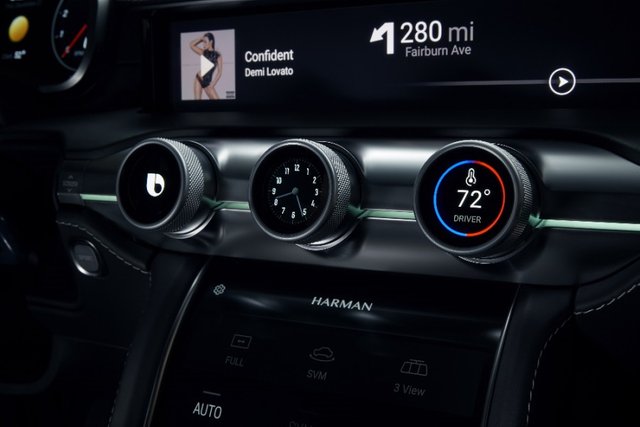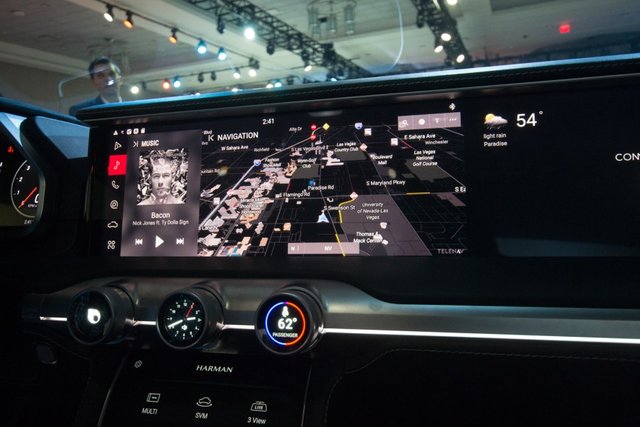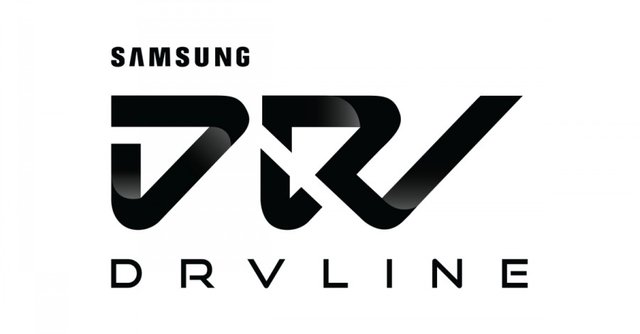#4_ [2018 CES] Samsung shows its automotive hand at CES 2018
LAS VEGAS: Consumer electronics companies are keen to get in on the electrification and automation of present and future vehicles right now. And as consumer electronics companies don't get much bigger than Samsung, it was only to be expected the South Korean company would unveil its automotive efforts to the world at this year's CES in Las Vegas.
The show is exactly the right place for Samsung to unveil its first components for autonomous driving and infotainment solutions that it has been developing with Harman International, which it bought out around a year ago as part of its major push into the vehicle electronics market.
It only takes a brief glimpse at the news coming out of CES 2018 to see how the automotive industry is now easily one of the fastest-growing segments of the technology market, and that's because automakers are looking to add more and more autonomous features as the race to put driverless cars on the road intensifies.
That's why Samsung has unveiled its new automotive camera system that includes collision warning, lane-departure warning, and adaptive cruise control, which it has developed in collaboration with Harman. The $8 billion deal to buy Harman in March last year was the biggest overseas acquisition ever made by a South Korean company, and it's now starting to look like a very wise move.
The camera system is built on a machine learning and augmented reality platform, and although the company didn't give exact timing, it's expected to start shipping later this year.
But the company is also showcasing what it calls a "digital cockpit," which is a clever system that lets drivers personalize cars they don't even own.
The system is designed to pull the users' profiles from either their mobile devices or the cloud, so it would be perfect for rental companies or autonomous ride-sharing applications. It has to be said though, that Samsung isn't the only game in town when it comes to the digital cockpit as Byton was showing a similar system at the show only a day earlier.
Samsung's name and reputation gives it an intrinsic advantage though. And the fact it set up a strategic business unit for autonomous and advanced driver assistance technologies, along with a US$300 million fund for investing in automotive startups and technology, shows just how serious it is about this burgeoning sector.
Samsung Electronics Co., Ltd. today introduced its new Samsung DRVLINE™ platform, positioning itself as the go-to partner for Original Equipment Manufacturers (OEM) and Mobility as a Service (MaaS) providers in the autonomous driving market. The DRVLINE™ platform is an open, modular, and scalable hardware and software-based platform, which is a valuable solution for automakers because it can integrate best-in-class technology into new vehicles, while also building a foundation for fleets of the future.
“The cars of tomorrow won’t just change how we get around, they’ll transform our streets and society. They’ll bring mobility to people who need it, make our roads safer, and revolutionize our communities,” said Young Sohn, President and Chief Strategy Officer at Samsung Electronics, and Chairman of the Board at HARMAN. “Building an autonomous platform requires close collaboration across industry, as one company cannot deliver on this enormous opportunity alone. The challenge is simply too big and too complex. Through the DRVLINE platform, we’re inviting the best and brightest from the automotive industry to join us, and help shape the future of the car of tomorrow, today.”
Samsung’s announcement, at CES, comes after a year of historic firsts for the company. These include: an $8 billion acquisition of connected technologies company HARMAN and the creation of a joint automotive Strategic Business Unit; the establishment of a $300 million Samsung Automotive Innovation Fund; and a series of investments and partnerships designed to promote collaboration in the automotive sector.
Many hardware and software autonomous driving platforms force the end user to adopt particular technology as an all-or-nothing black-box package. The DRVLINE™ platform however, has been designed so vendors can collaborate and the software can be customized or enhanced and individual components and technologies can be swapped in and out as needed. This also helps future-proof the platform – an essential consideration in such a fast-changing industry: OEMs can market the most advanced existing autonomous technology, while incorporating new innovations as they work toward Level 5 automation.
The DRVLINE™ platform incorporates several best-in-class components and technologies, which leverage Samsung’s global expertise in electronics, IoT, and embedded systems, including in-car compute for Levels 3, 4, and 5 automation. It also includes a brand-new ADAS forward-facing camera system, created by Samsung and HARMAN, which is engineered to meet upcoming New Car Assessment Program (NCAP) standards. These include lane departure warning, forward collision warning, pedestrian detection, and automatic emergency braking.
“In a car, the human brain is constantly performing incredibly complex calculations while driving,” said John Absmeier, SVP of Autonomous/ADAS Strategic Business Unit at HARMAN and VP of Smart Machines for Samsung Electronics. “How far is that lamppost? Is that pedestrian going to step into the street? How long until the yellow light turns red? The industry has made incredible advances in automation, yet in-car compute is still a long way from approximating the power of our brains. The DRVLINE platform with its open and high-level compute capability is a first major first step toward building an ecosystem to support full autonomy.”
Samsung appears at CES alongside several of its partners in ADAS and autonomous driving. As part of its strategy of open innovation and collaboration, the company has engaged a robust ecosystem of partners across the industry, including:
삼성전자, "하만과의 여정, 단거리 주행 아냐"
"인수 후, 1년에 가까운 시간 동안 하만과 많은 일을 함께했다. 삼성의 사용자환경(UI), 사용자경험(UX), 디스플레이 기술과 하만의 전장 기술이 시너지를 냈다."
손영권 삼성전자 최고전략책임자(CSO) 사장은 9일(현지시각) 미국 라스베이거스 하드록 호텔에 설치된 하만 전시관에서 기자들과 만나 이 같이 말했다.
손 사장이 언급한 삼성전자와 하만의 시너지는 이들이 공동 개발한 '디지털 콕핏'의 형태로 구체화됐다.
아날로그 방식의 자동차 계기판, 오디오·공조 조절 장치 등을 모두 디지털화한 제품이다.
하만은 이미 디지털 콕핏의 수주를 따내는 데 성공했다. 이탈리아 고급차 브랜드 마세라티 일부 라인업에 들어간다. 보급형 제품의 경우 BMW 미니쿠퍼 등 경차에도 적용될 수 있다.
손 사장은 하만과의 협력이 단기적인 제품 개발에 그치지 않을 것임을 밝혔다.
그는 "(하만과 함께) 미래에 투자하는 이 여정은 결코 단거리 주행이 아니다"라고 강조했다.
자율주행차 혼자 못 만들어, 오픈 플랫폼 중요
삼성전자는 가전, 모바일 뿐 아니라 자동차 전장 분야에서도 오픈 플랫폼 전략(open platform)을 추구한다.
경쟁사를 포함한 다양한 업체와의 협력 가능성을 열어두고 있다는 얘기다.
손영권 사장은 "자율주행 기술은 단일 기업이 하나의 고유 기술을 가지고 실현할 수 없다"며 "삼성전자에게는 경쟁사인 칩 제조사와도 협업을 해야 한다"고 강조했다.
실제로 이날 공개된 디지털 콕핏의 경우 삼성전자 빅스비뿐 아니라 아마존 알렉사, IBM의 왓슨 등 다양한 플랫폼 위에서 작동할 수 있도록 설계됐다.
레벨4 자율주행차 내년에 시연한다
이날 하만 전시관에서 공개된 삼성전자의 자율주행 솔루션 '드라이브라인(DRVLINE)도 오픈 플랫폼 전략의 산물이다. 이는 완성차 업체와 모빌리티 서비스 업체들이 각자의 필요에 맞게 센서와 부품, 소프트웨어를 변형할 수 있도록 모듈화된 개방형 솔루션이다.
하만 관계자는 "드라이브라인은 컴퓨팅, 센서, 알고리즘, 클라우드 서비스 등 다양한 분야의 업체들과 협업한 결과물"이라고 말했다. 삼성전자는 현재 전장 분야에서 ▲TT테크 ▲ AI모티브 ▲ 헬라 아글라이아 ▲ 그래프코어 ▲ 싱크아이 ▲ 인피티언 ▲ 발렌스 ▲ 콰너지 ▲ 테트라뷰 등과 협업
중이다.
한편, 하만은 삼성전자의 '드라이브라인' 플랫폼을 탑재한 레벨4 자율주행차를 내년 CES 2019에서 시연할 예정이다. 미국 자동차 기술 협회(SAE)의 기준에 따르면 레벨4 자율주행차는 사람이 목적지만 입력하면 자율적으로 판단해 스스로 주행하는 수준의 자율주행을 구현한다. 손영권 사장은 "오는 2030년이면 자동차 산업이 6조7천만달러 규모로 성장할 것"이라며 "전장 사업이 큰 기회가 될 수 있다"고 강조했다.



자율주행차 기대됩니다 !
자주 놀러와서 좋은 정보 얻어가세요 !!
Wow!!!
Awesome!
Wow!!! Thanks !
자율주행 진짜 머지않은것 같습니다.
4차 산업이 주는 사회적 단점도 걱정이 되긴 하는데
기대되는 면도 크네요. 정리하신 글 잘 봤습니다^^
인프라가 기술을 따라가야할텐데 .. 정말 세상 좋아지는 것 같긴 하네요 ^^
오늘도 좋은 하루 되세요 !!ㅎㅎ